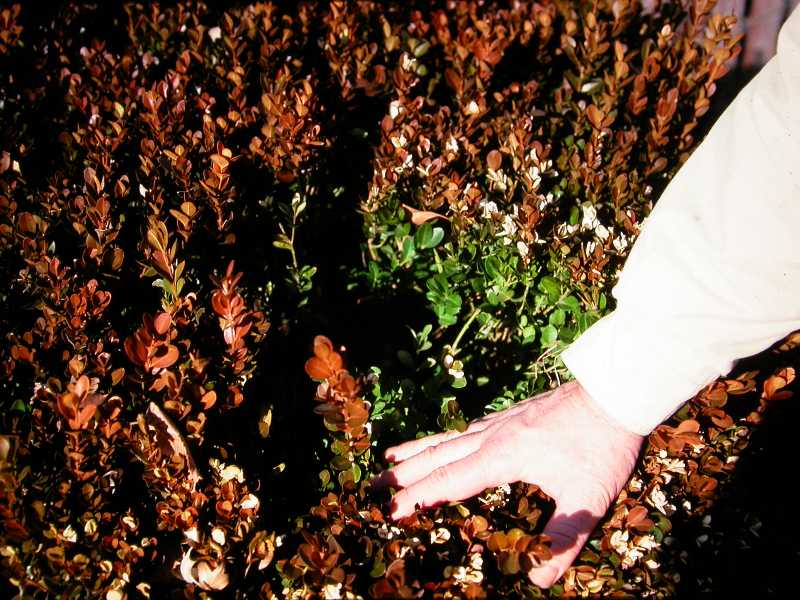 |
Winter burn on tips of boxwood (Buxus); note undamaged interior leaves |
Desiccation or winter burn is primarily a problem of evergreens and results when these 3 situations occur: low soil moisture, freezing temperatures, blowing wind. With these 3 factors in place, evergreens lose moisture through transpiration faster than their roots can replace it from the frozen ground. Depending on the evergreen species, some evidence of needle tip discoloring is seen. Fir trees tend to show yellowish, possibly red needle tips. Spruces and pines will show yellow, yellow-brown advancing to red tip coloration. As the situation worsens, the coloration moves down the needle tip to the base and from outer branches inward. Damage will be more severe on the side of the tree exposed to sun and wind. Broad-leafed evergreens like rhododendron show browning of leaf margins.
Integrated Pest Management Strategies
1. Water adequately. This is 1 inch per week or saturation to the depth of 12 to 18 inches. Watering needs to be continued through late autumn into early winter as long as the ground is not frozen.
2. Provide a barrier to wind. A burlap barrier can deflect wind from the plant.
3. Mulch. Put organic mulch around the plant so the entire root zone is covered. This will reduce moisture loss.
4. Provide good culture. Watch the amount of moisture in the spring when the plant is coming out of a period of frozen ground, and low moisture availability. Water as needed if the rainfall is less than an inch per week.
Organic Strategies
All of the recommended IPM strategies are strictly organic approaches.
More images:
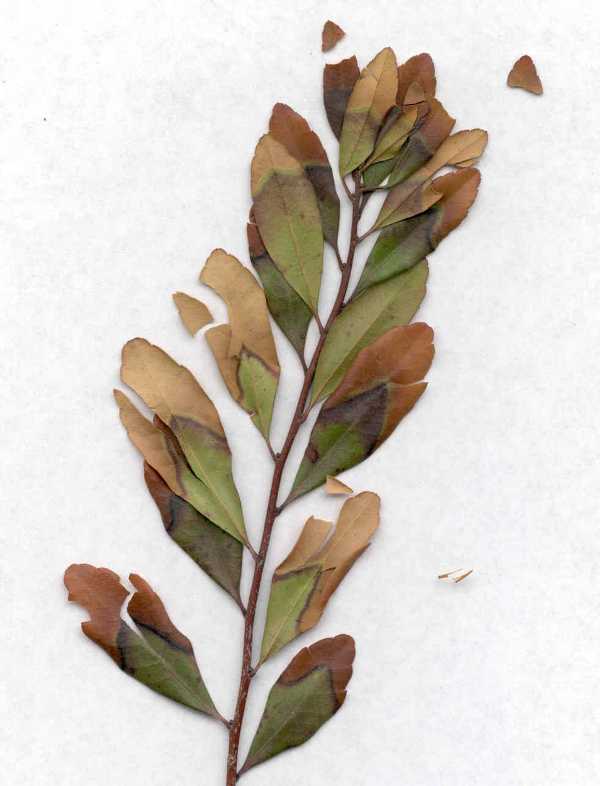 |
| Winter burn on bayberry (Myrica pensylvanica) |
|
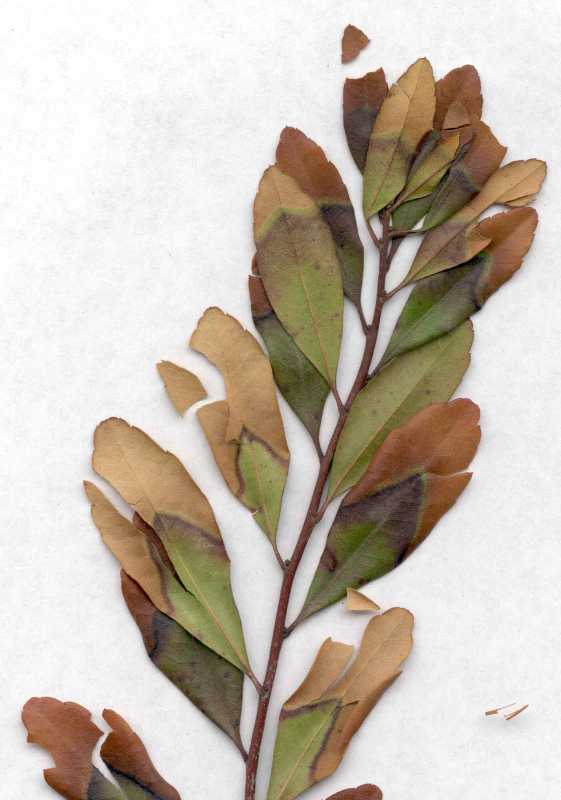 |
| Winter burn on bayberry (Myrica pensylvanica) |
|
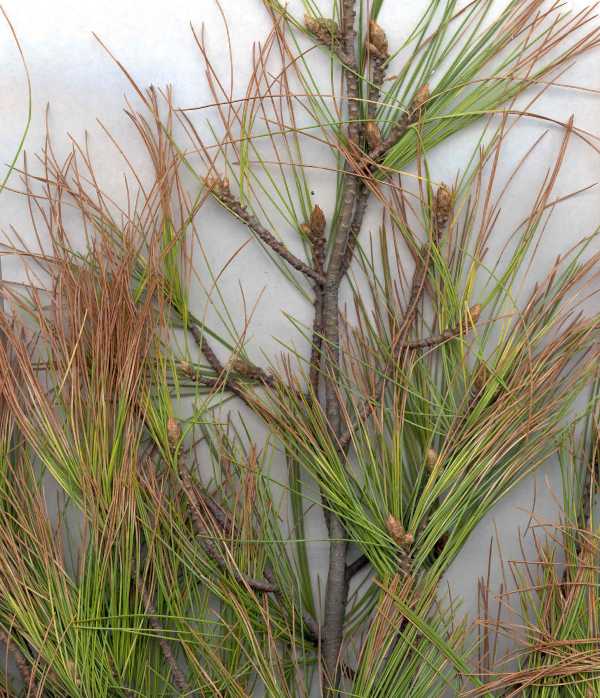 |
| Winter burn on white pine (Pinus strobus) |
|
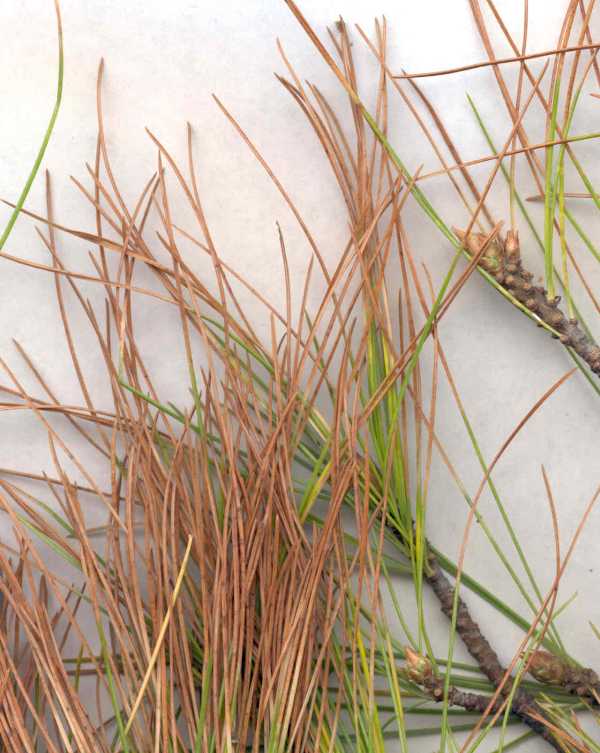 |
| Close-up of winter burn on white pine (Pinus strobus) |
|
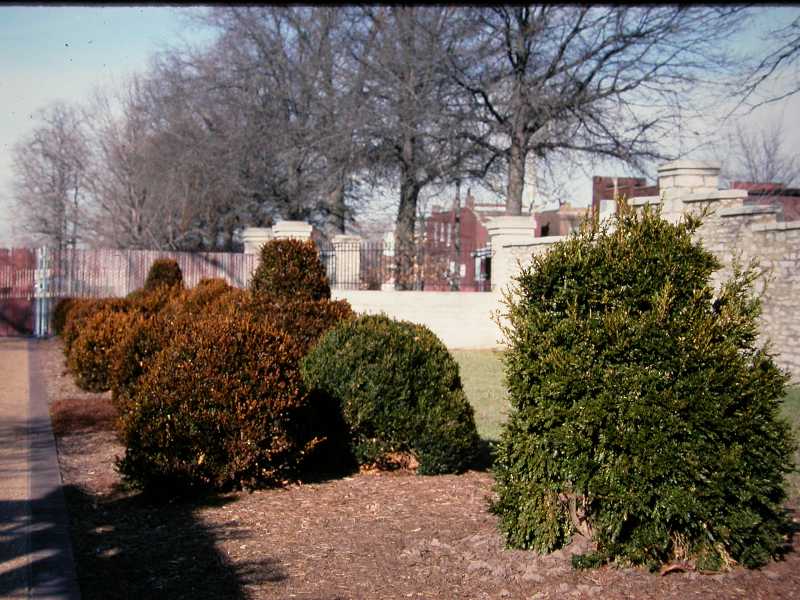 |
| Winter burn on boxwood (Buxus) |
|
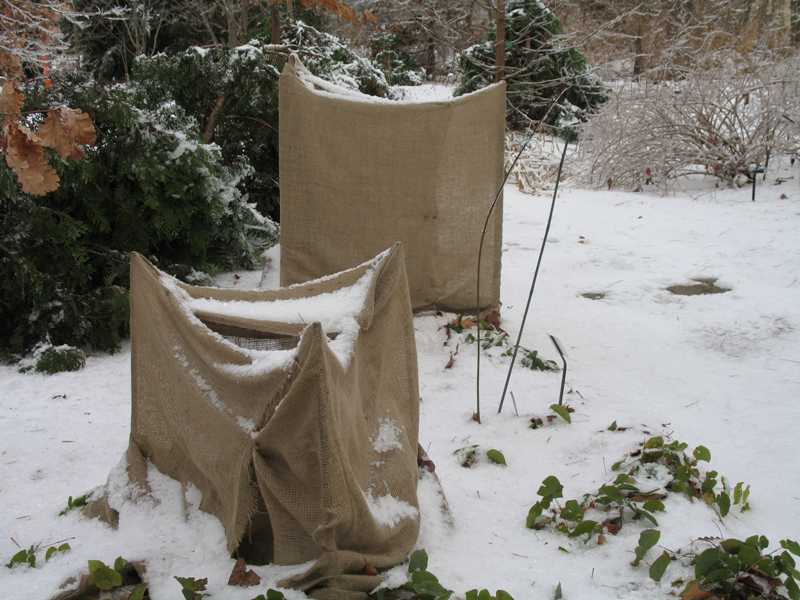 |
| Winter injury to newly planted evergreens and to tender shrubs like big leaf hydrangeas (Hydrangea macrophylla) can be prevented by placing a burlap screen around individual plants |
|
 |
Winter injury on the ornamental Canadian yew (Taxus canadensis). H.F. Schwartz, CSU, Bugwood.org
|
|
|